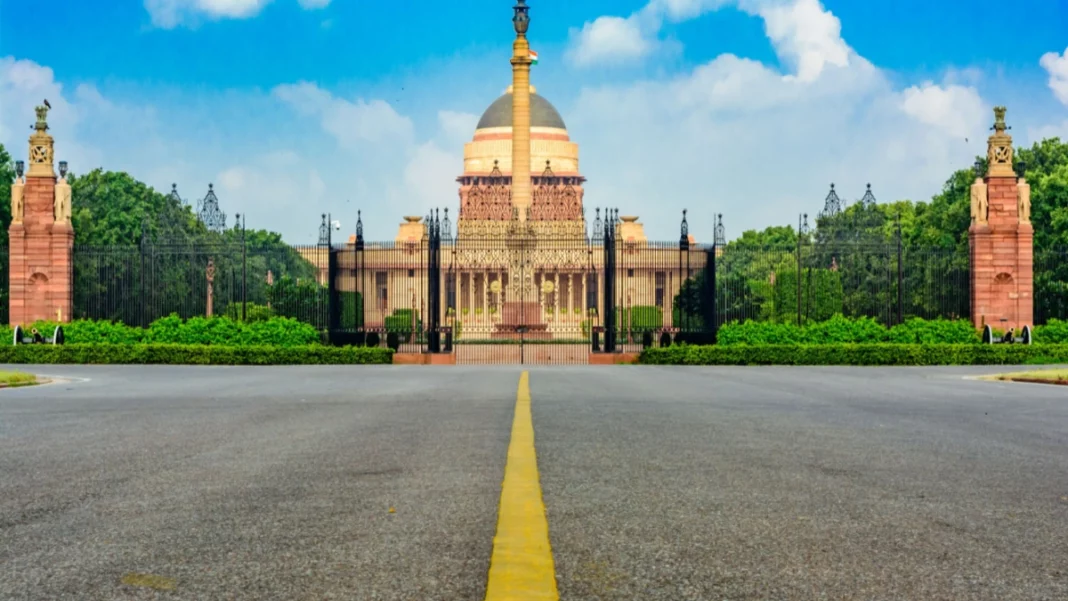A tribal leader and the second woman to hold the country’s highest constitutional position, Droupadi Murmu was sworn in as India’s 15th President on Monday. She is the country’s first tribal leader.
On July 25, Draupadi Murmu took the oath of office as India’s fifteenth president. Murmu won the presidential election by a significant margin over Yashwant Sinha of the opposition.

Draupadi Murmu said in her first speech as President at the Central Hall of Parliament, “While Standing in the Parliament, the symbol of all Indian ambitions, aspirations, and rights, I would like to express my sincere gratitude to all of you.” Your confidence in me and your unwavering backing will help me to successfully handle this new duty.”
I am fortunate to have this opportunity to serve during the 75th year of independence, she added, adding that.” She further stated that becoming President of India was not a personal accomplishment but rather a victory for all of India’s underprivileged citizens.
She claimed that her nomination “shows that the impoverished in India may not only dream but also accomplish those ambitions.”
She continued, “It’s testament to the democratic institutions in India that a girl from an impoverished tribal background can reach the top.“
President Draupadi Murmu declared, “I am the first President of the country born in independent India.”
The Parliament’s Central Hall served as the site of the swearing-in event. The oath of office was delivered by Chief Justice of India NV Ramana. President Murmu visited Rashtrapati Bhavan and paid respects to Mahatma Gandhi, the nation’s father, earlier in the day. She was greeted by previous President Ram Nath Kovind and his wife Savita Kovind.
A historic presidential election was held on July 22 in which the former governor of Jharkhand defeated the opposition candidate Yashwant Sinha.
What is the Role of the Indian President?
As the current head of state, President Murmu is charged with a wide range of duties. Articles 52 to 62 of the Indian Constitution, along with a number of other Articles throughout the document, describe the duties, authority, and responsibilities of the president of India.
Legislative Authority
- The president, who is in charge of the executive branch, has the authority to dissolve or reconvene the Houses of Parliament.
- Each piece of legislation must first receive the president’s approval before it becomes law. Except for money measures, the president may only return a bill to the Parliament once.
- 12 Rajya Sabha nominees are chosen by the president based on their excellent achievements across a range of industries.
- When the Parliament is not in session, the president may, if necessary, enact ordinances on the recommendation of the Union Cabinet.
Executive Authority
- The Parliament may, if it sees proper, grant the president extra powers on top of the regular executive authority as the head of state. The president may also grant state governors additional authority over these matters.
- Defining responsibilities and powers
- The prime minister of India and the Union Cabinet are chosen by the president based on the PM’s recommendations.
- The chief justice is also chosen by the president from a list of options provided by the Supreme Court.
- The attorney general, ambassadors, governors, and other officials are among the other executive branch officials that the president has the power to appoint.
Military Powers
- The commander-in-chief of the Indian armed forces, including all of its branches and services, is the country’s president.
- All treaties are signed in the name of the president, who has the authority to declare war or peace with any nation.
Pardon
The president has the authority to commute the death penalty when necessary.
President-elect Draupadi Murmu was presented with the certificate at her residence in the nation’s capital by PC Mody, the Returning Officer for the 2022 presidential election and Secretary General of the Rajya Sabha.
Draupadi Murmu Political Career
Murmu started her political career in 1997 by joining the BJP. She was initially chosen to serve as a Rairangpur Nagar Panchayat councilor. In 2000, she was elected to lead the same panchayat, and a year later, she was named vice president of the BJP’s Scheduled Tribe Morcha. She received the Nilkhantha Award in 2007 for being the finest MLA in the Odisha Assembly, and in 2015, she was appointed Jharkhand’s first female governor.
On July 24, former President Ram Nath Kovind’s term ended.
Celebrations were held in Odisha and Jharkhand to honour her remarkable journey through tragedies and triumphs.
Also Read: How to Make Money Through Website Flipping?
Josie Patra is a veteran writer with 21 years of experience. She comes with multiple degrees in literature, computer applications, multimedia design, and management. She delves into a plethora of niches and offers expert guidance on finances, stock market, budgeting, marketing strategies, and such other domains. Josie has also authored books on management, productivity, and digital marketing strategies.


